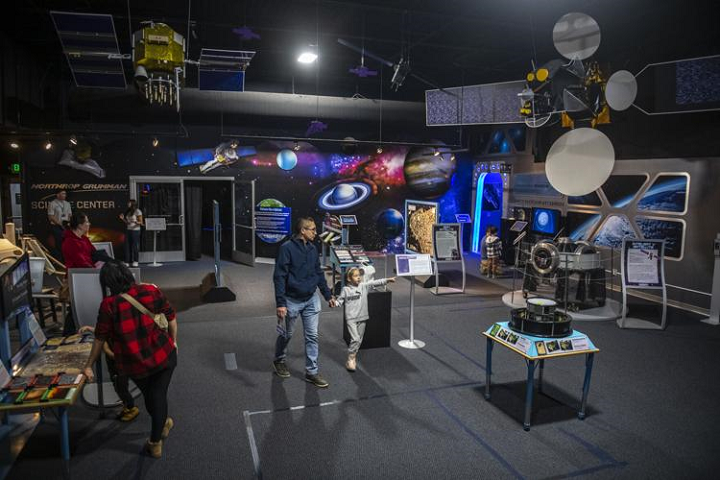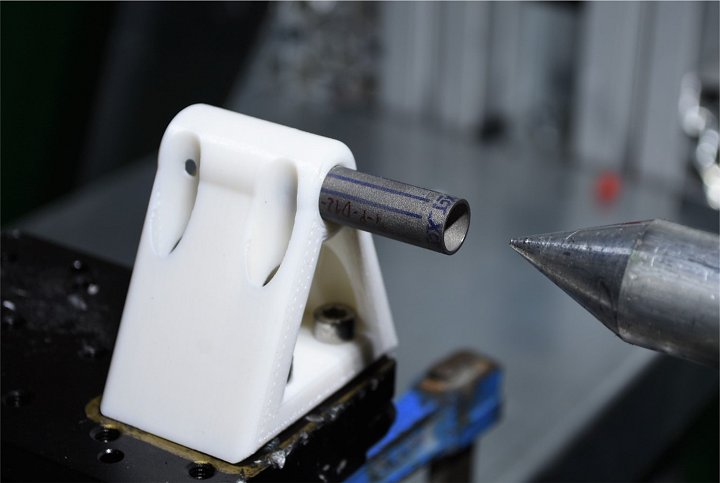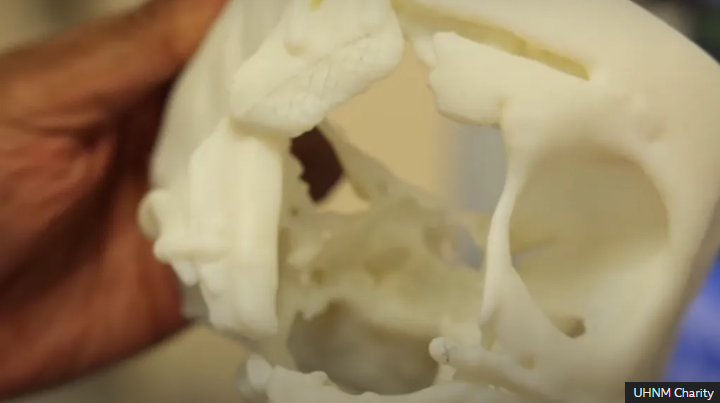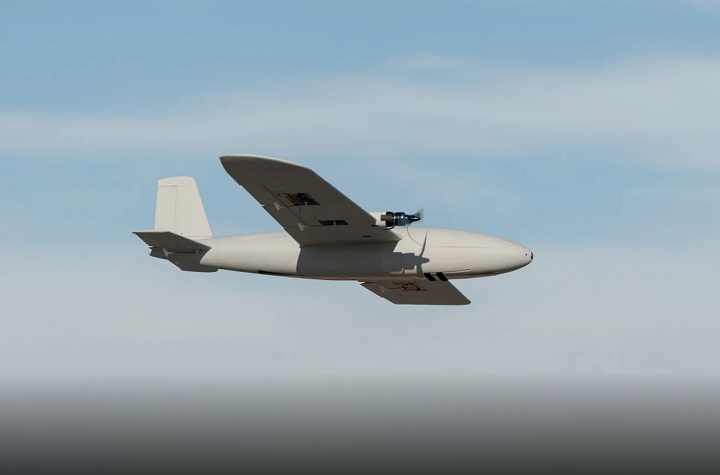We’re starting with metal 3D printing research in this New Year’s Eve edition of 3D Printing News Briefs, and then moving on to a 3D printed surgical model and probiotics research. We’ll finish with 3D printing in space education and 3D printed military drones in Ukraine.
Experimental Method to Analyze Protective Qualities of Metal AM Structures
A team of researchers from Universidad Carlos III de Madrid (UC3M) and IMDEA Materials Institute came up with a new experimental technique for fragmentation tests meant to analyze the protective qualities of 3D printed metallic structures. This faster, more flexible method tests the mechanical performance of these materials, in particular their capacity for energy absorption during impact; applications include civil and aerospace engineering and aeronautics. In their published paper, the researchers detailed their fragmentation tests of a 3D printed circular, conical-nosed projectile at impact speeds of up to 400 meters per second, and determined the ideal distribution in size and shape of the pores from the printing process, as well as their effect on the formation and spreading of cracks. The team says their device has a lower operating cost than systems that use electromagnetic systems or explosives, and since it can carry out experiments in-situ, it could help offshore the manufacturing of protective structures.
José Antonio Rodríguez Martínez, a Senior Lecturer at UC3M and a Visiting Researcher at IMDEA Materials, developed this research within the framework of PURPOSE, a European Union ERC Starting Grant (GA 758056) project. He explained, “This technique will ultimately tell us whether metal 3D printing is a viable technique for building protective structures. In the US there are already specific programmes promoted by the Department of Defence and the Department of Energy to fund this line of research, so we hope that the European Union and the Government of Spain will also develop a long-term vision that will allow us to bring the fundamental research we are carrying out into engineering practice.”
3D Printed Infection-Resistant Metals for Surgical Implants

WSU researchers tested the newly developed material for resistance to fatigue. (Image: Washington State University)
Washington State University (WSU) researchers developed a novel surgical implant that was 3D printed out of an infection-resistant metal, which could lead to better infection control in common surgeries like knee and hip replacements. One of the top causes of failure and bad outcomes for these surgeries is bacterial colonization of the implants, as the commonly used titanium materials aren’t great at overcoming infections. While doctors can try to treat this with systemic antibiotics, surgical implant infections can also result in a revision surgery where the implant is removed and a new one put in. The WSU team added 3% copper and 10% corrosion-resistant tantalum to the typical titanium alloy, and found that it was able to kill 87% of the bacteria that cause staph infections in laboratory tests, while also remaining strong and compatible with the surrounding tissue and implant.
“Infection is a problem for which we do not have a solution. In most cases, the implant has no defensive power from the infection. We need to find something where the device material itself offers some inherent resistance — more than just providing drug-based infection control,” explained Amit Bandyopadhyay, corresponding author on the team’s research paper and Boeing Distinguished Professor in WSU’s School of Mechanical and Materials Engineering. “Here we’re saying, why not change the material itself and have inherent antibacterial response from the material itself?”
3D Printed Model Helps During Life-Saving Facial Reconstruction
Speaking of surgery, what Alison Hough from Staffordshire first thought was a sinus infection was eventually confirmed to be a cancerous tumor in her nose and brain cavity, and she was given just two weeks to live. But specialists at Royal Stoke University Hospital had access to 3D printing, which surgeon Daya Gahir said “made all the difference to treatment.” They 3D printed a model to better understand, and plan the removal of, the tumor, as well as to help reconstruct some of her features. The facial reconstruction surgery was challenging, but the level of planning the 3D printed model allowed the surgeons meant it was a success. Hough had a lot of support after the surgery, and she is now cancer-free, with only a minor operation on her lip needed to complete her treatment. She wanted to share her story to raise money for the UHNM charity, which helps fund hospital equipment.
“In a lot of [hospital] units, this would have definitely have been deemed inoperable, and she would probably have been having palliative treatment,” Gahir said, proving that 3D printing really can save lives.
Improving Impact of Probiotics on Gut Health with Food 3D Printer

Sun-Ok Lee, left, associate professor of nutrition, and Ali Ubeyitogullari, assistant professor of food engineering, are working to improve probiotics with 3D food printing technology. (U of A System Division of Agriculture photo)
Living microorganisms called probiotics are good for the health of your gut and can help prevent chronic diseases. But, the active microorganisms in some probiotics don’t always get to the gastrointestinal tract due to environmental factors like stomach acids. In a study supported by a USDA-NIFA grant, food science and nutrition researchers at the University of Arkansas Agricultural Experiment Station are using food 3D printers to improve the impact that probiotics can have on your gut health. The idea is to protect probiotics during food processing, transportation, storage, and once they’ve been consumed. The team is using food 3D printing to encase probiotics in alginate-pectin microgel beads that are pH sensitive and resistant to highly acidic conditions, but will open in the colon where acid levels are lower. The beads are printed out of ink made from probiotics mixed with a gel-like, corn-based starchy material, and then infused into cookies and yogurt for viability evaluation.
“During almost all the processing steps, the probiotics are exposed to external pressures like temperature, so we are trying to make them stable during food processing,” explained Ali Ubeyitogullari, assistant professor of food engineering in the food science and biological and agricultural engineering departments. “With 3D printing, we can precisely locate and encapsulate them at the same time. And this can be infused directly into the product, where you deal with the right amount and position.”
Space Foundation Discovery Center Remodel Includes 3D Printing Lab

Families enjoy the final day before the Space Foundation Discovery Center closes for renovations. The center is set to open in the spring and will include a “drone zone” in addition to a revamp of the rest of the space. (Image: Gabi Broekema, The Denver Gazette)
The Space Foundation Discovery Center in Colorado Springs recently closed to undergo a $3 million renovation and expansion, which is meant to increase interest in space—one of the world’s fastest growing economic sectors—and help students consider careers in the field. The foundation wants to increase in-person visits from 300,000 total over the last ten years to about 100,000 people annually within five years after reopening. With what it has planned for the center, this shouldn’t be too difficult. In addition to a new drone zone and upgrades to its Mars Robotics Laboratory and Science on a Sphere, the renovation will also add 3D printers to a dedicated lab focused on interactive learning about additive manufacturing, which is used often now to build durable, reliable parts and rocket engines for space.
Visitors to the new drone zone will get a sense of what it would be like to fly NASA’s Ingenuity drone in the low atmosphere of Mars, and the center is also providing resources and lesson plans to teachers, as well as virtual opportunities to learn. There will also be a new console that shows what it’s like to pilot satellites from Earth, which is one of the main missions of the U.S. Space Force. In fact, Colorado Springs has one of the largest concentrations of Space Force guardians, and CEO Heather Pringle said that children of those service members would often visit the Discovery Center. The center sees a lot of involvement from the military community through its volunteers, and Boeing, Lockheed Martin, and Northrup Grumman have all donated to the remodel. The Space Foundation Discovery Center hopes to reopen this April.
Ukrainian Army Testing Long-Range 3D Printed Drones from Donaustahl
On behalf of an American-Ukrainian NGO, Germany’s Donaustahl GmbH donated 3D printed long-range reconnaissance Titan Falcon drones to the Armed Forces of Ukraine (AFU). It’s been reported that two of the three drones are being tested in an operational environment by the Ukrainian military, to see how adaptable they are in diverse terrains. The Titan Falcon UAV was designed by startup Titan Dynamics, which focuses on maximizing utility, optimizing efficiency, minimizing production costs, and increasing long-range capabilities of 3D printed UAVs.
The 3D printable drone features an operational flight range of 400 kilometers and can fly for six hours. It has a First Person View (FPV) camera for real-time surveillance, and its reconnaissance capabilities are enhanced further with a 2.5″ lens camera. Germany isn’t the first nation to send 3D printed military help to Ukraine. In early 2023, under a clandestine program, the U.K. developed and trialed a range of 3D printed drones for the country’s military, and this fall, the U.S. Department of Defense supplied seven massive SPEE3D printers to Ukraine; these will be used to rapidly fabricate critical repair parts, like hinges and brackets, for military equipment.
Subscribe to Our Email Newsletter
Stay up-to-date on all the latest news from the 3D printing industry and receive information and offers from third party vendors.
You May Also Like
Gorilla Sports GE’s First 3D Printed Titanium Cast
How do you help a gorilla with a broken arm? Sounds like the start of a bad joke a zookeeper might tell, but it’s an actual dilemma recently faced by...
Nylon 3D Printed Parts Made More Functional with Coatings & Colors
Parts 3D printed from polyamide (PA, Nylon) 12 using powder bed fusion (PBF) are a mainstay in the additive manufacturing (AM) industry. While post-finishing processes have improved the porosity of...
$25M to Back Sintavia’s Largest Expansion of Metal 3D Printing Capacity Since 2019
Sintavia, the digital manufacturing company specializing in mission-critical parts for strategic sectors, announced a $25 million investment to increase its production capacity, the largest expansion to its operations since 2019....
Velo3D Initiates Public Offering in a Bid to Strengthen Financial Foundations and Drive Future Growth
Velo3D (NYSE: VLD) has been among a number of publicly traded 3D printing firms that have attempted to weather the current macroeconomic climate. After posting a challenging financial report for 2023,...


































